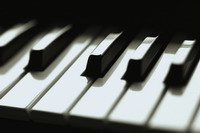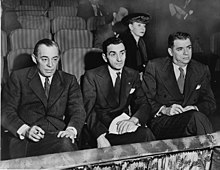Piano Sheets > Oscar Hammerstein Sheet Music > Softly, As In A Morning Sunrise (ver. 2) Piano Sheet
Softly, As In A Morning Sunrise (ver. 2) by Oscar Hammerstein - Piano Sheets and Free Sheet Music

About the Song
Other avaliable versions of this music sheet: Version 1 Version 2
Softly, As in a Morning Sunrise is a song with music by Sigmund Romberg and Oscar Hammerstein II from the 1928 operetta The New Moon. One of the best-known numbers from the show, it is a song of bitterness and yearning for a lost love, sung in the show by Philippe (tenor), the best friend of the hero, Robert Mission (baritone).
The original song was composed as a tango, and features a dance as accompaniment to the choral reprise, but many versions of the song have changed the tempo completely (there have been several jazz renditions). What some may consider the most ludicrous version is the one featured in the 1940 film version of the operetta, in which it is actually sung as a cheerful ditty by Nelson Eddy while he shines his shoes, despite the melancholy nature of the song's lyric. Oscar Hammerstein II (pronounced /ˈhæmərstaɪn/; July 12, 1895 – August 23, 1960) was an.
Download this sheet!
About the Artist

Random article
Sheet music, theory and beyond When you take a look at a piano music sheet for the first time, all you will see is beautiful written characters which make absolutely no sense to you. And if you are a keen observer, you will notice that there are many types of circles associated with the piano music sheet language. Sheet music belonging to the instrument piano also consists of incomplete circles connected together by one or a collection of lines. Plus there are other symbols which will appear totally strange to you. So what are they all about and what do they mean? (More...)
